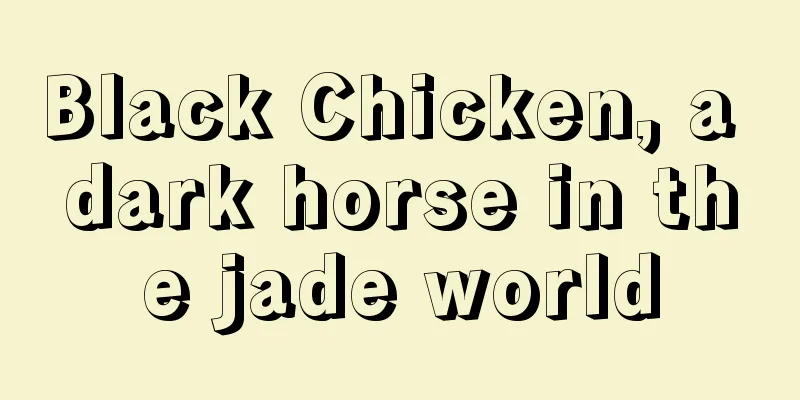What does the term "type" of jadeite mean and is there any way to classify it?

|
As the saying goes, "Gold in troubled times, jade in prosperous times", from this we can see this person's love for jade. Jadeite, as a more representative type of jade, is known as the "King of Jade". Because of its rich color and crystal clear texture, jadeite is also called "Emperor Jade". Because it has been loved by people since ancient times, it is called the birthstone of May together with emerald, symbolizing luck and happiness. Anyone who knows about jade should know that in the jade industry, there is a word called "species". So, what exactly is this “species”? Let’s take a look together! The so-called "type" is actually a relatively important criterion for evaluating the value of jadeite. It refers to the fineness of the internal structure. The finer the structure, the stronger its ability to transmit light and the better its transparency. This will make the jade appear more crystal clear, which is called "good quality" or "good water head" in the jargon. To describe the quality of transparency, we use "long", "short", and "sufficient" to express it, such as "long water head". "One point of water" means that the light transmittance depth is one point, which is about "3 mm". One point of water means that jadeite with a thickness of 3 mm is transparent. "Two-point water" means that the light transmittance depth is two points, which is about "6 mm". Two-point water means that jadeite with a thickness of 6 mm is transparent. "Three-point water" means that the light transmittance depth is three points, which is about "9 mm". Three-point water means that jadeite with a thickness of 9 mm is transparent. There is a saying that goes "laymen look at the color, experts look at the quality". If the transparency of jade is not good, no matter how bright the color is, people will feel that it does not have the moistness of jade. As for the classification of jade water, there are usually the following types: Glass Type Glass-type jade, as the name suggests, is as transparent as glass, with very fine quality, dense crystal particles, and fluorescence. It is the best jade. Glass-type jade has the highest grade of water content. Generally, glass-type jade is "colorless", that is, most glass-type jade is colorless, because colorless jade has the purest jadeite content, dense structure, fine texture, and no impurities, and the "jade quality" is almost invisible to the naked eye. When you look at things through glass jadeite, you can basically see them clearly. Ice Ice jade is a type of jade whose texture is second only to glass jade. Its texture characteristics, transparency, and appearance are similar to ice cubes in the refrigerator. It is a translucent jade. The texture of ice jade is translucent with an icy texture, giving people a feeling of ice and jade. The crystal grains of ice jade are slightly coarser than those of glass jade. Under the naked eye, there is a faint granularity and orange peel effect. The bonding between the crystals is not very good, and there are some tiny white gaps, which leads to a short water head and poor light transmittance. If there are blue or green flocs or veins distributed on the ice-type jadeite, it is called ice-type floating flowers. Blue is generally amphibole minerals, distributed in scattered and irregular shapes. High ice High ice jade belongs to ice-type jade. High ice jade is the best among ice-type jade, close to glass-type. The word "high" in "high ice" is generally used to describe the high level of transparency of jade. Maybe it's a bit far-fetched to say the word "level" in the topic of jade. In layman's terms, among jades of the same ice type, high ice means the best in water head. Glutinous "Nuo" refers to the fineness of jade; "Zhong" refers to rice porridge, in which the rice grains are all rotten and no grains can be seen, only rice soup is left. The water head is between transparent and opaque. The biggest feature is the relatively fine texture and the slightly oily luster. Moreover, there are often a large number of fine impurities distributed inside the jade, which gives people the feeling that it is not only turbid but also not clean enough. This type of jade is the most common variety on the market. Ice glutinous Ice-glutinous jade refers to a type of jade that is slightly more turbid than ice jade, just like ice that is not transparent and mixed with air. The transparency of the glutinous variety is lower, but the ice glutinous variety is very fine, and the particles are almost invisible to the naked eye. Bean seeds The name of bean-type jade is very vivid. Most of them are short columnar, just like beans arranged inside the jade. The interface of these crystals can be seen with the naked eye, and we can see its granular structure with the naked eye. There is a saying in the industry that "nine out of ten are beans", which means that bean varieties have a high yield. Bean varieties can be divided into: fine bean varieties, green bean varieties, ice bean varieties, colored bean varieties, and coarse bean varieties.
fruit fcgc33 |
<<: How can a jade carver carve beautiful colors and exquisitely with a piece of ordinary material?
Recommend
Afraid of being cheated when buying jade? First learn to distinguish between A, B, and C goods
First of all, B-grade and C-grade jade are relati...
Appreciate the rare jadeite in auction history, top quality, rarely seen
Since ancient times, jade has been loved by the C...
Wear jade on the left hand and silver on the right hand? There are some rules for wearing bracelets and bracelets. You should distinguish between the left and right hands to bring good luck and avoid disasters!
A few days ago, I was having dinner at a restaura...
Do you know how to “collect” and “hide” jade?
There is a saying since ancient times: "Buy ...
Only high-end jadeite has the characteristics of luster, glue and hardness. Does the jadeite in your hand have these characteristics?
I believe that when friends are shopping in the m...
How is a piece of exquisite jade carved by hand? What processing techniques must it go through?
Jade is a kind of jade, and like other jades, it ...
Damakan yellow and green jadeite raw stone, such carving is so exquisite and attractive
The jadeite rough stone comes from the famous Dam...
Jade Appreciation | Descendants of the dragon deserve the dragon’s blessing!
The dragon is the totem of the Chinese nation and...
The raw stone that was thought to be worthless was carved into the most expensive radish in jade by chance by a craftsman!
As the saying goes: "One carrot, one hole&qu...
What are the glass type and imperial green jade?
What is glass type? The older generation of jade ...
Can jade be interpreted in this way? 99% of people can understand it!
Jade is beautiful but also mysterious. Its variou...
Is Jade Exclusive for Ladies? These jades are also suitable for men!
It is well known that jewelry is a woman's na...
Why do jade ornaments need a base?
As the saying goes, "The most beautiful scen...
Which one is more valuable: a jade bracelet or a jade pendant?
Question: If you are given 50,000 yuan to buy jad...
I bought a piece of jadeite with green flowers all over it for 5,000 yuan. After it was carved, everyone was scrambling for it!
Today the editor brings you a piece of jadeite ro...









